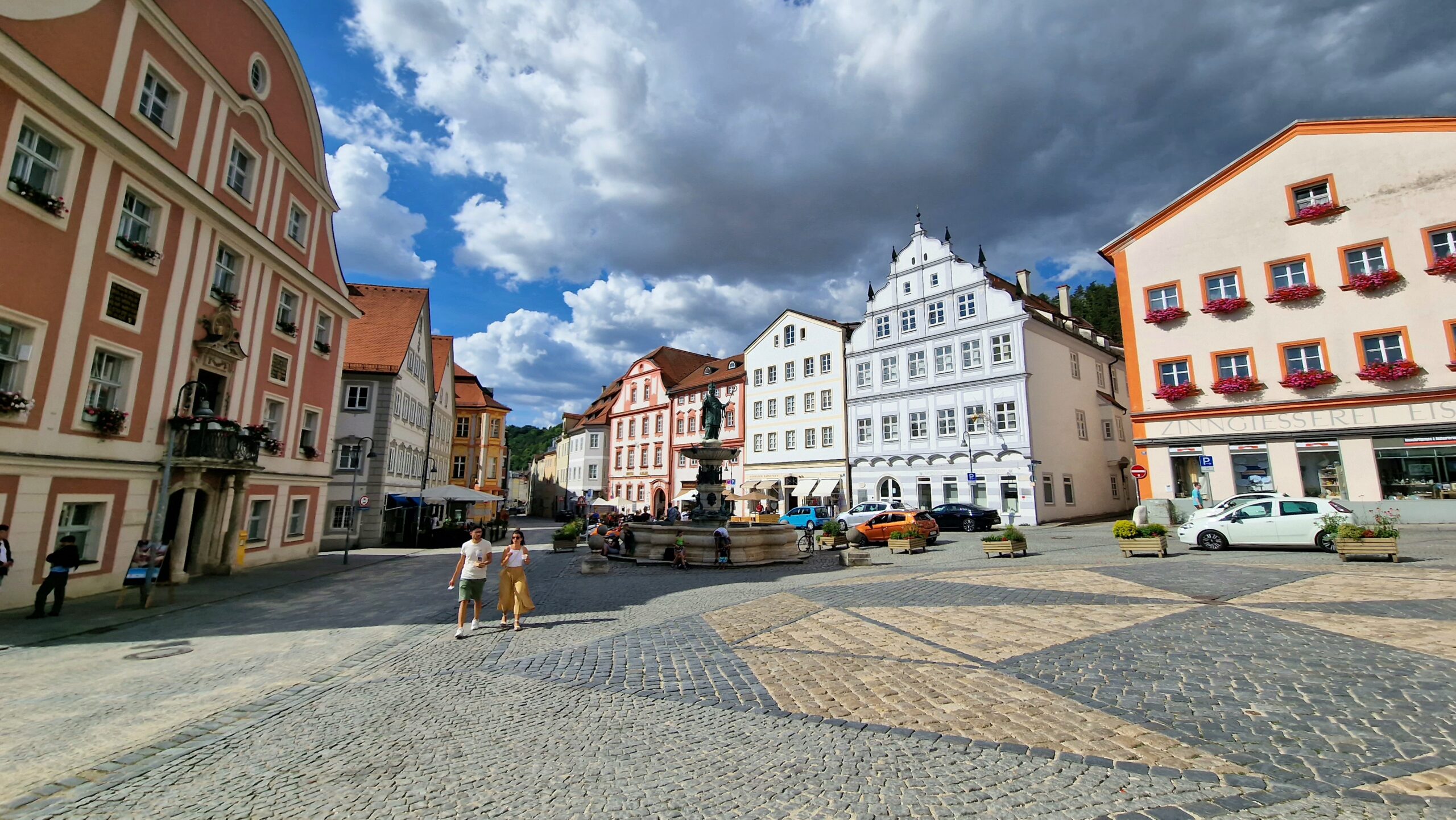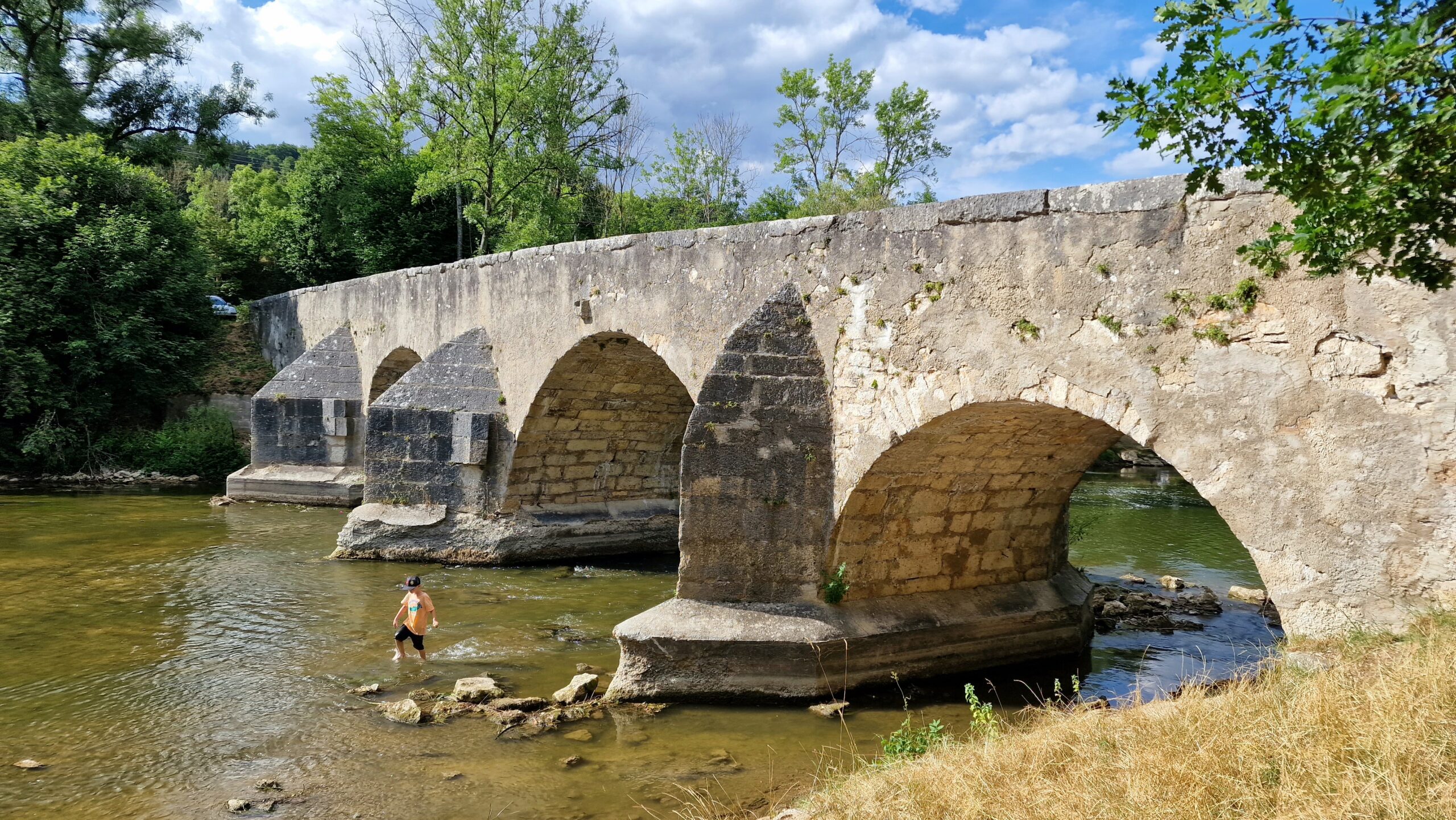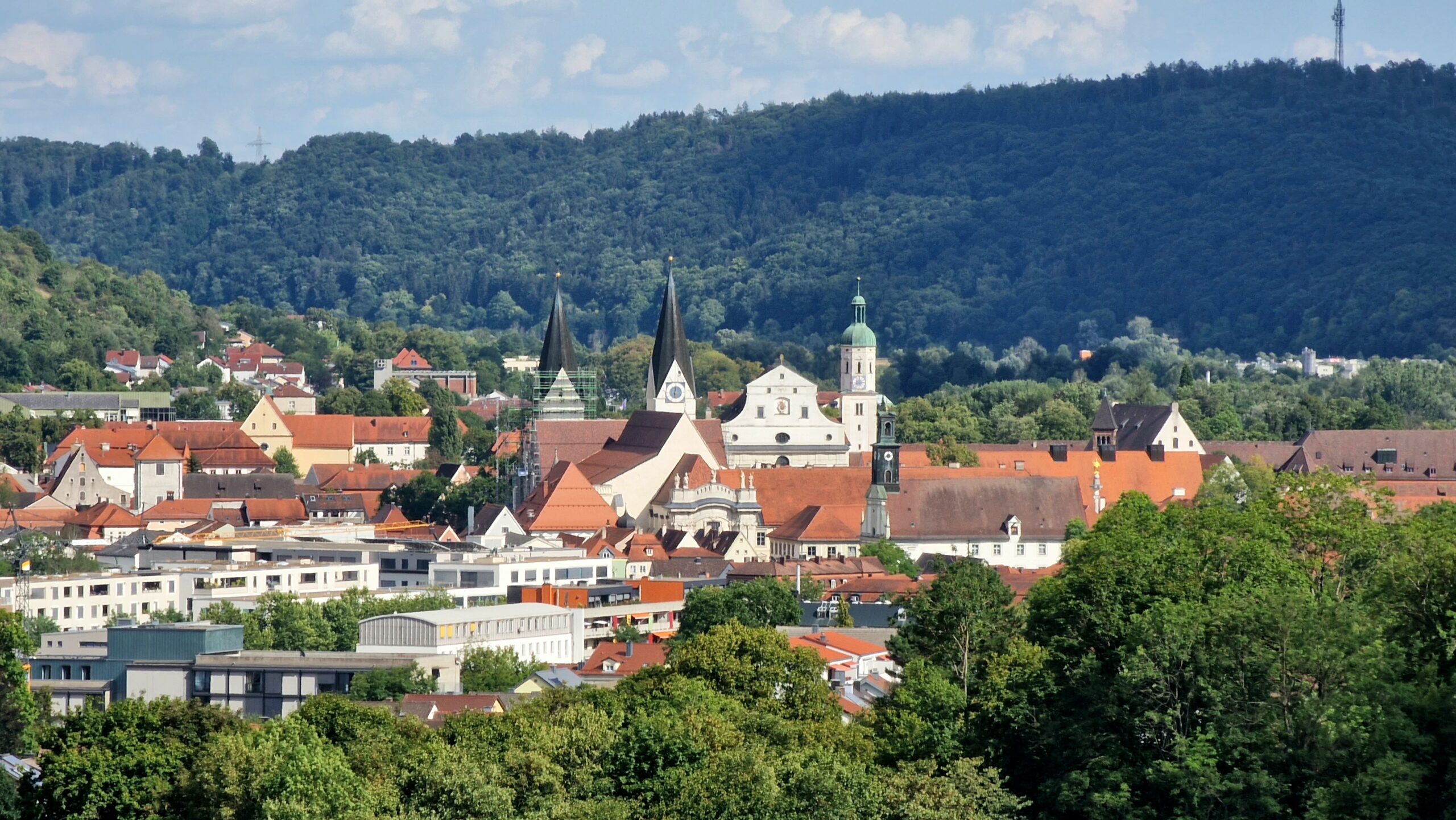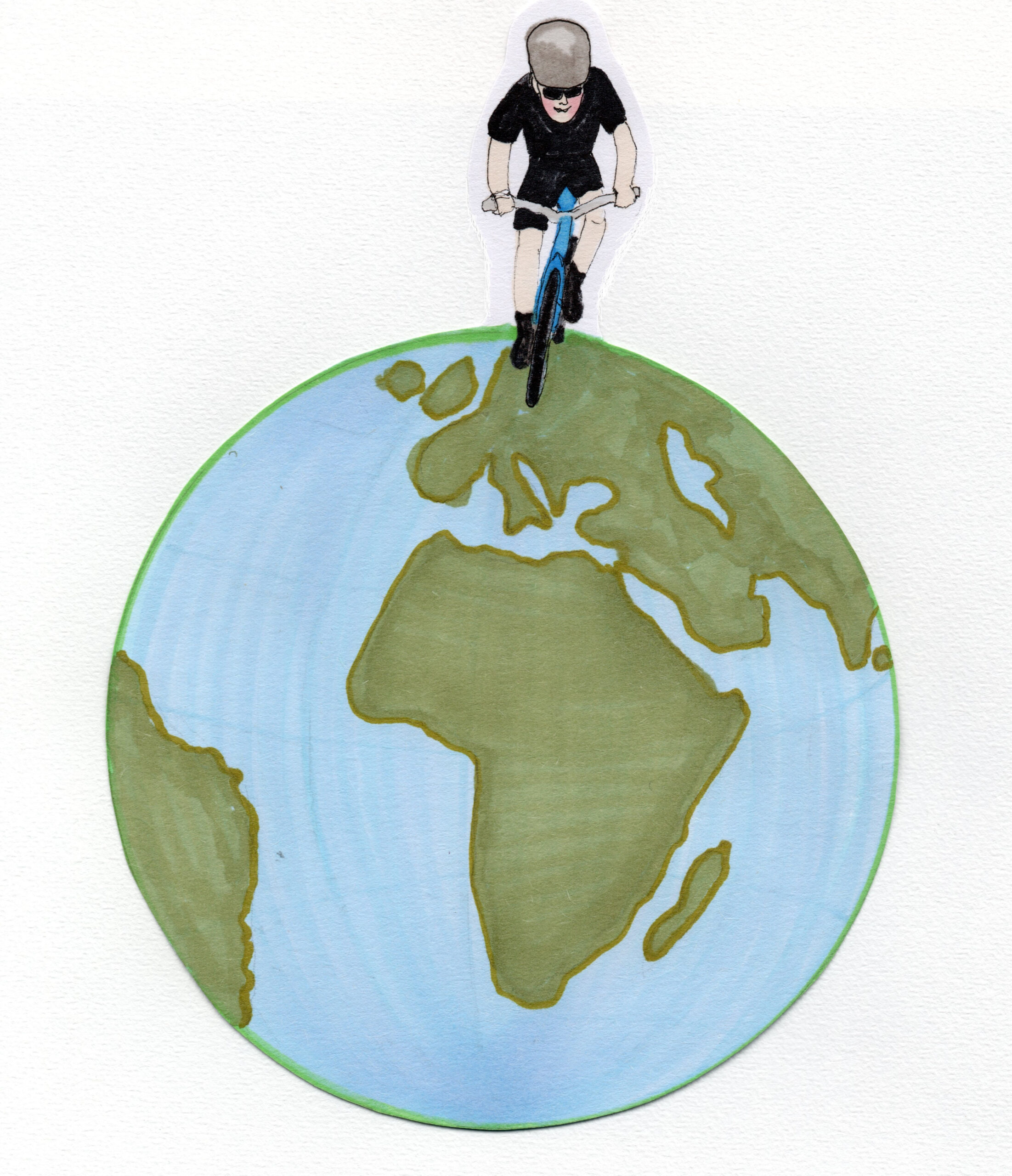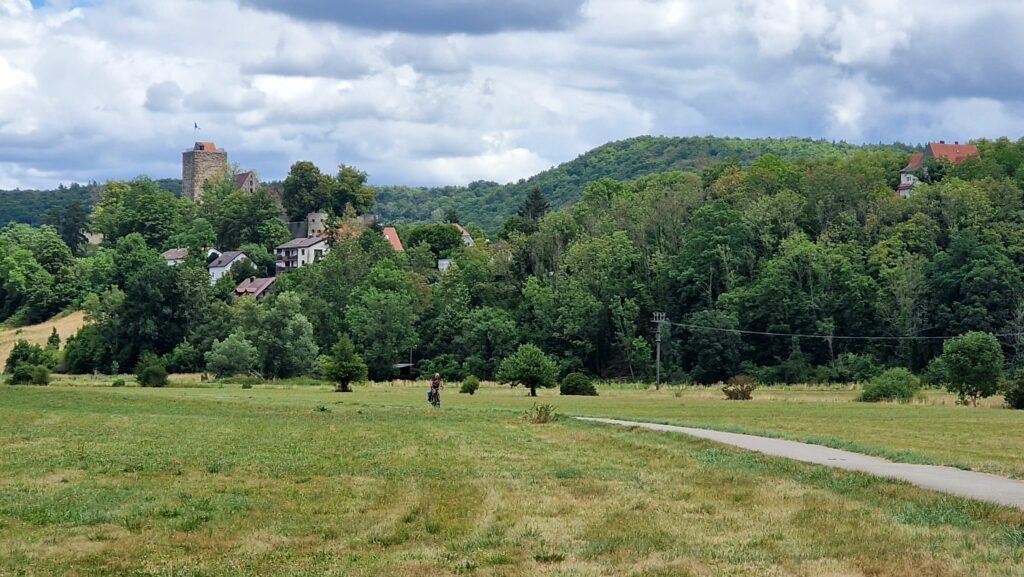Days 92-94 of my cycling journey around the world – August 1-3, 2022
Starting at the campground in Muhr am See, I cycled almost the entire day in the Altmühltal, the valley along the Altmühl river. Passing dramatic Jurassic landscapes at temperatures above 30 centigrade let me jump several times into the river to cool down. At the end of my 79 km tour, I had once more to climb some metres onto the hills beyond the valley to reach my old study friend’s little village. What followed were two rest days with him and his family and the experience of being on a Bavarian family farm.
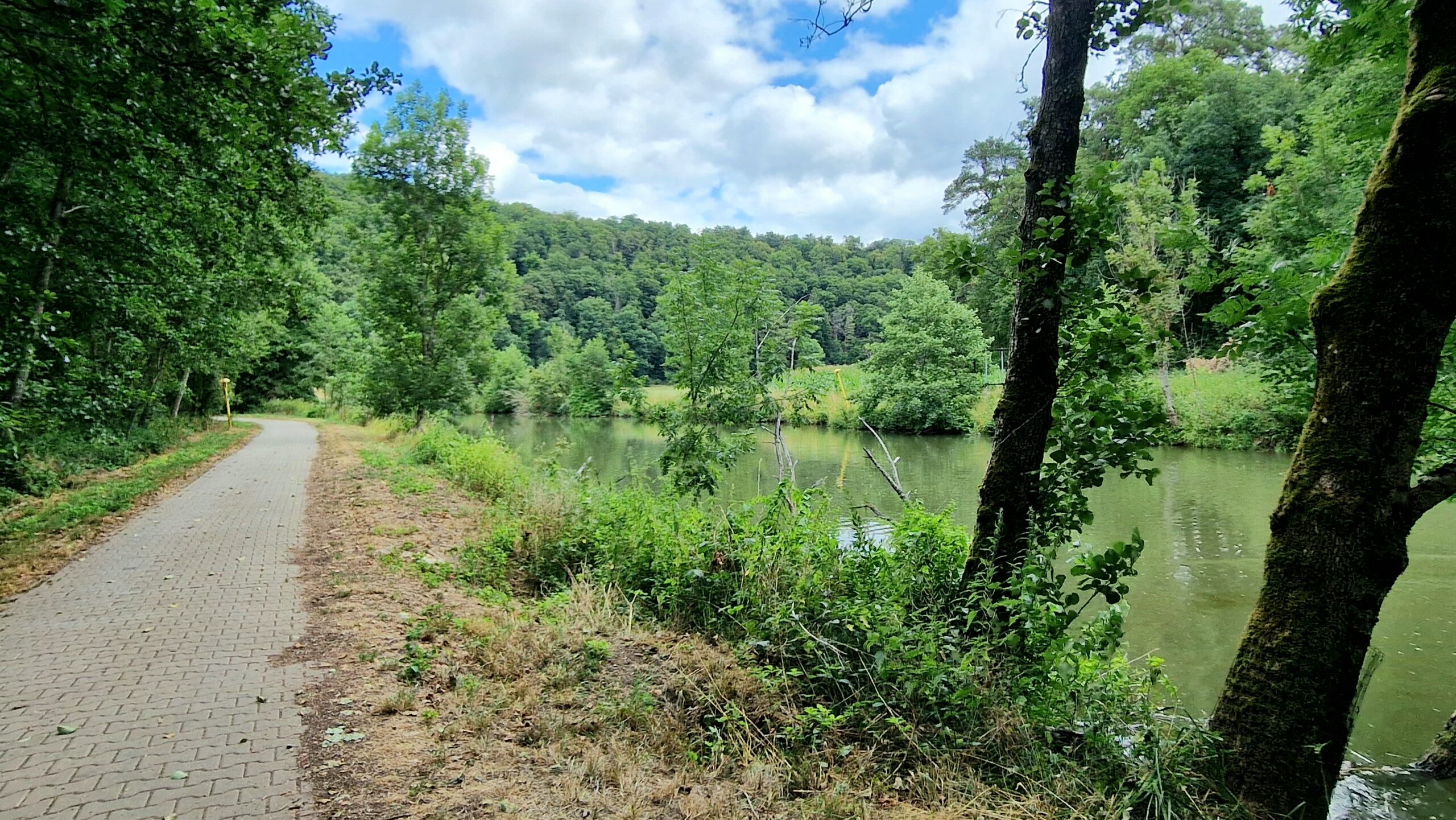
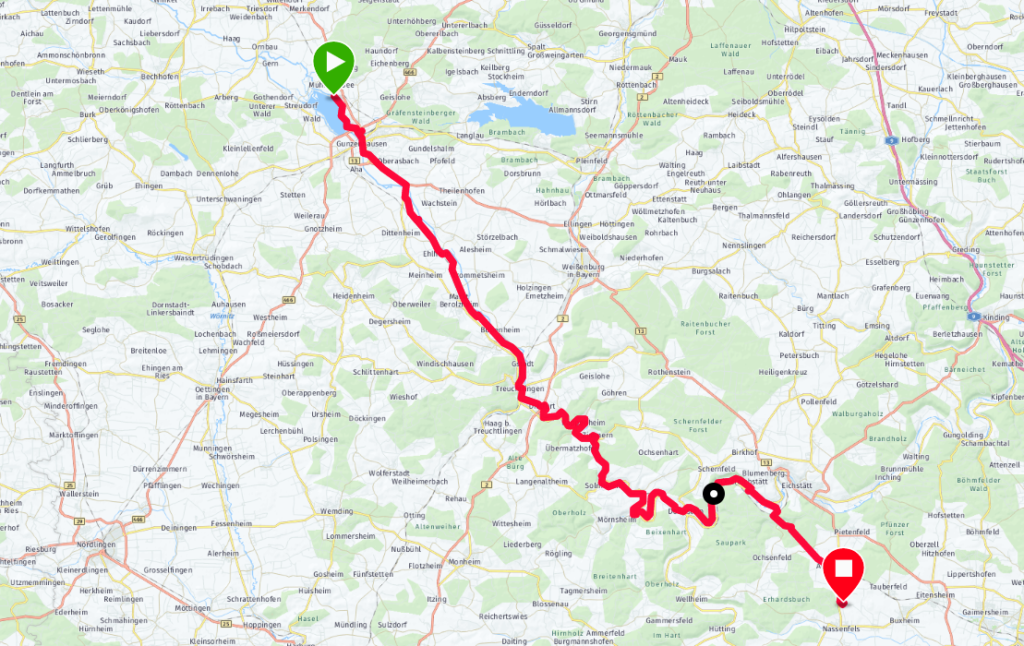
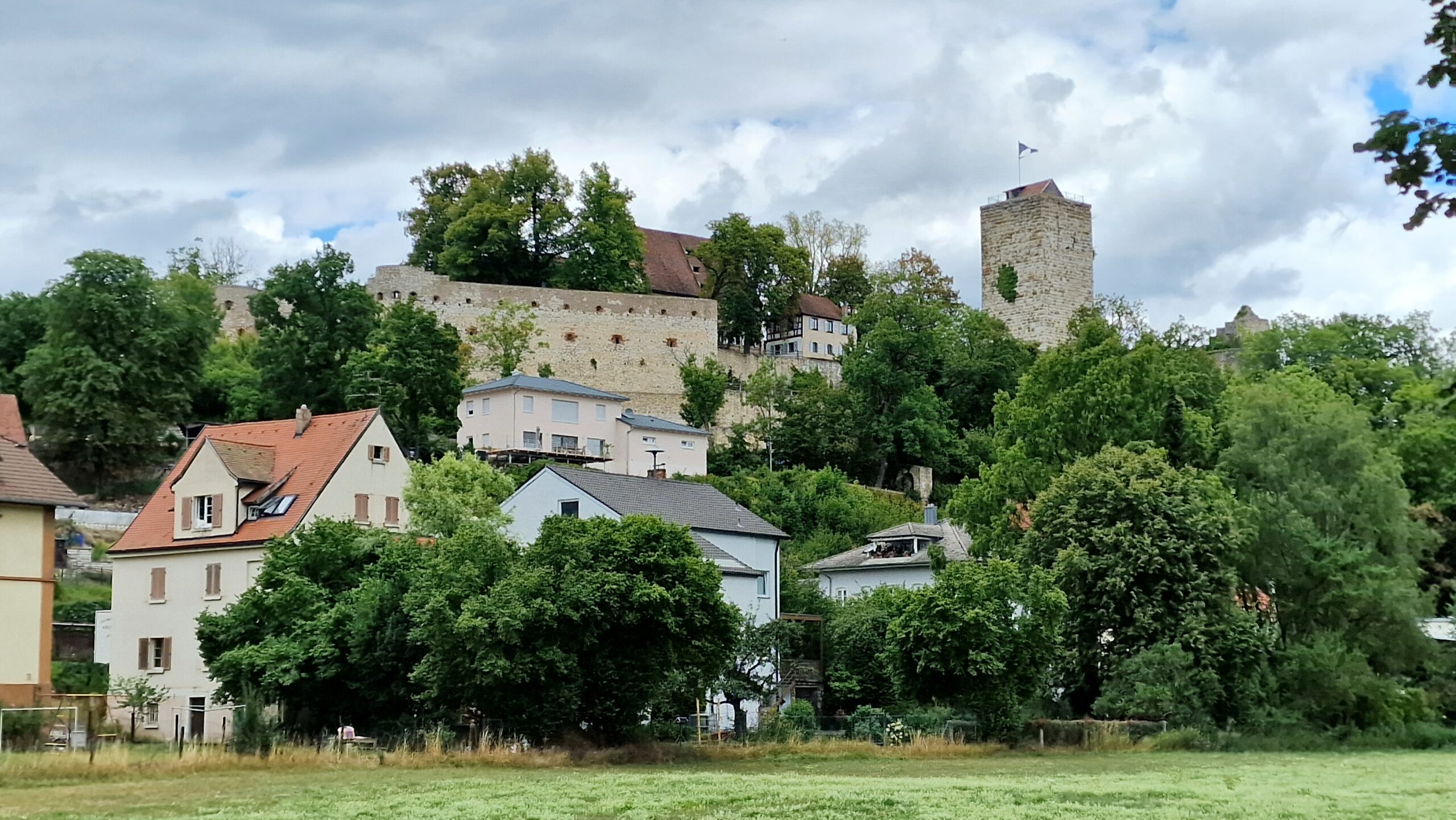
My campground in Muhr am See was strategically well located directly at the cycle path I had to take to get further south. Hugging the shore of the Althmühlsee, a man-made construct, the morning cycling was absolutely beautiful. Reaching Gunzeshausen breakfast was my number one priority, since I couldn’t buy groceries the day before. Germany is still in a time when Sunday is the day of rest and prayer and consequently no shops have open. Much to my chagrin because I had completely overlooked that it was Sunday. Eating my breakfast at the Altmühl river was then a worthy compensation and it brought me into a very relaxed mood. The further south I came the more the Altmühl valley underwent change. Was it before a river in a vast valley of extensive agricultural fields, the moment I passed Treuchtlingen the valley narrowed dramatically. White limestone cliffs were pressing the valley together and steep hills were rising on both sides of the river. The Jurassic character of the area let me imagine that millions of years ago this was a shallow sea with tropical islands and lagoons, populated by a sea ecosystem of which fossils can be found in the limestone today. In fact, the limestone quarries in this area are a fountain of wealth for fossils and all Archaeopteryx specimens in the world were found in this region. Archaeopteryx, a bird-like dinosaur was very small but played a major role in the acceptance of Darwin’s evolutionary theory. Discovered only a few years after Charles Darwin’s book “On the origin of species”, the fossil dinosaur was accepted to be the ancestor of modern birds and confirmed at the same time Darwin’s theory.
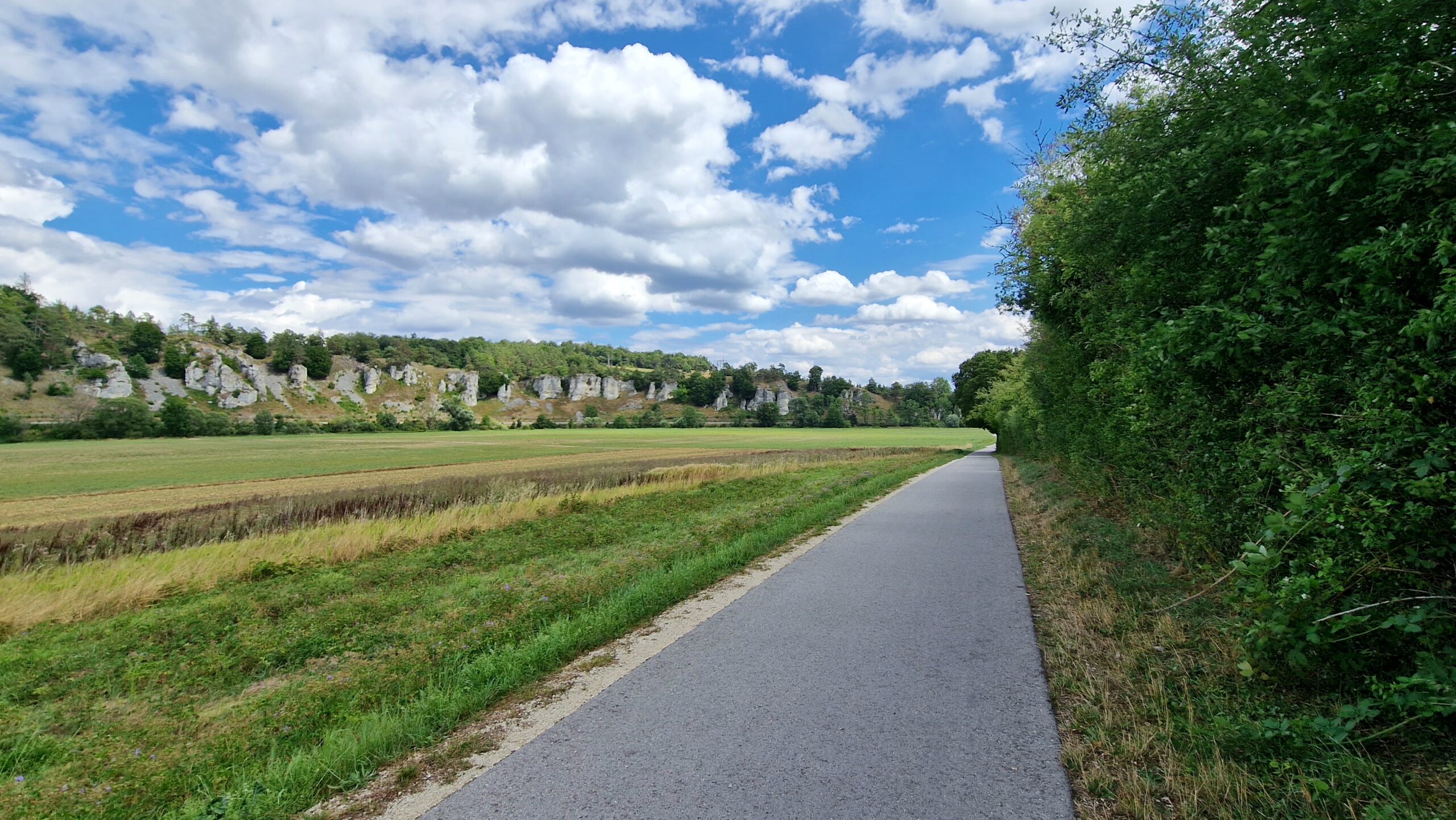
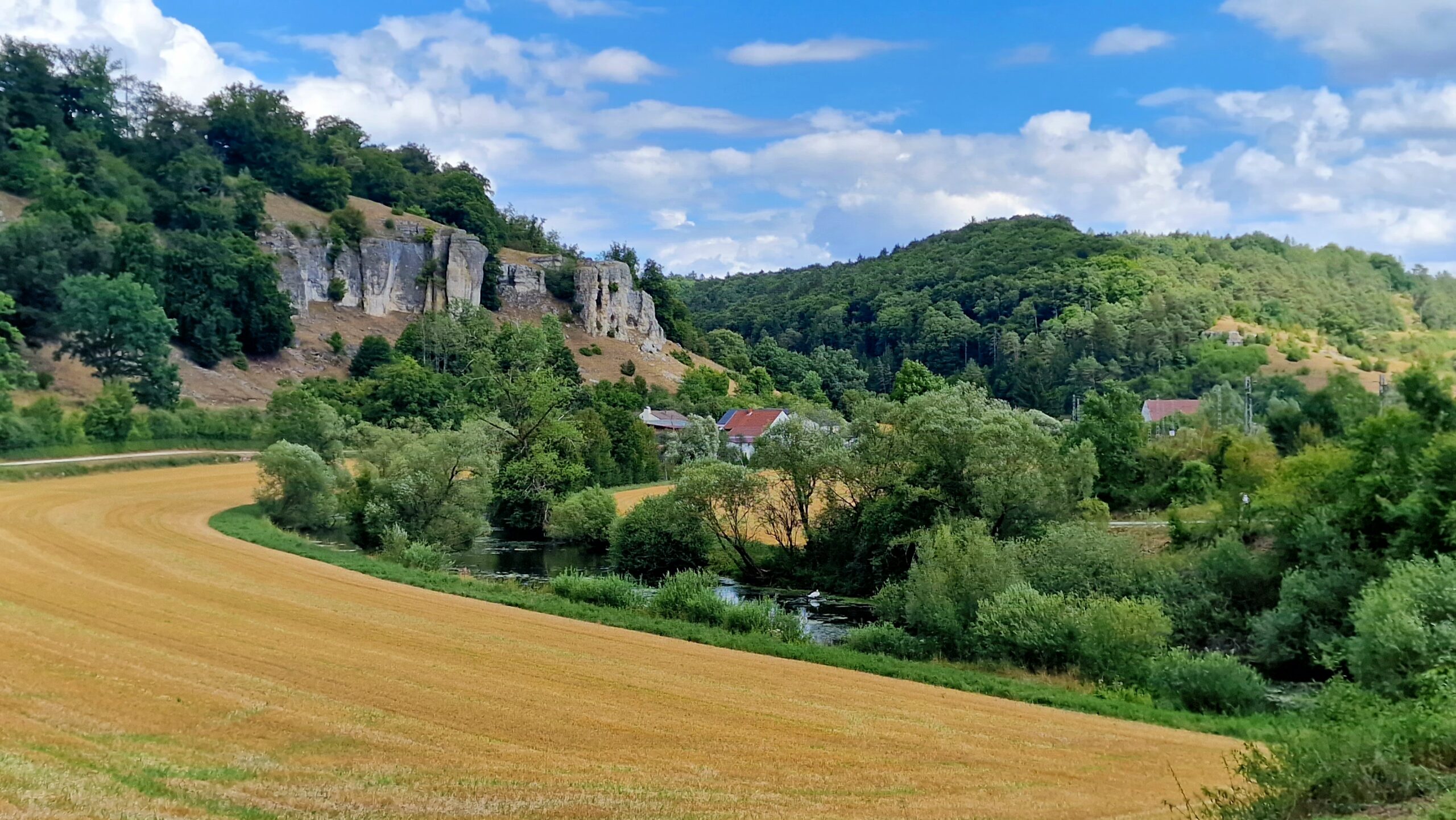
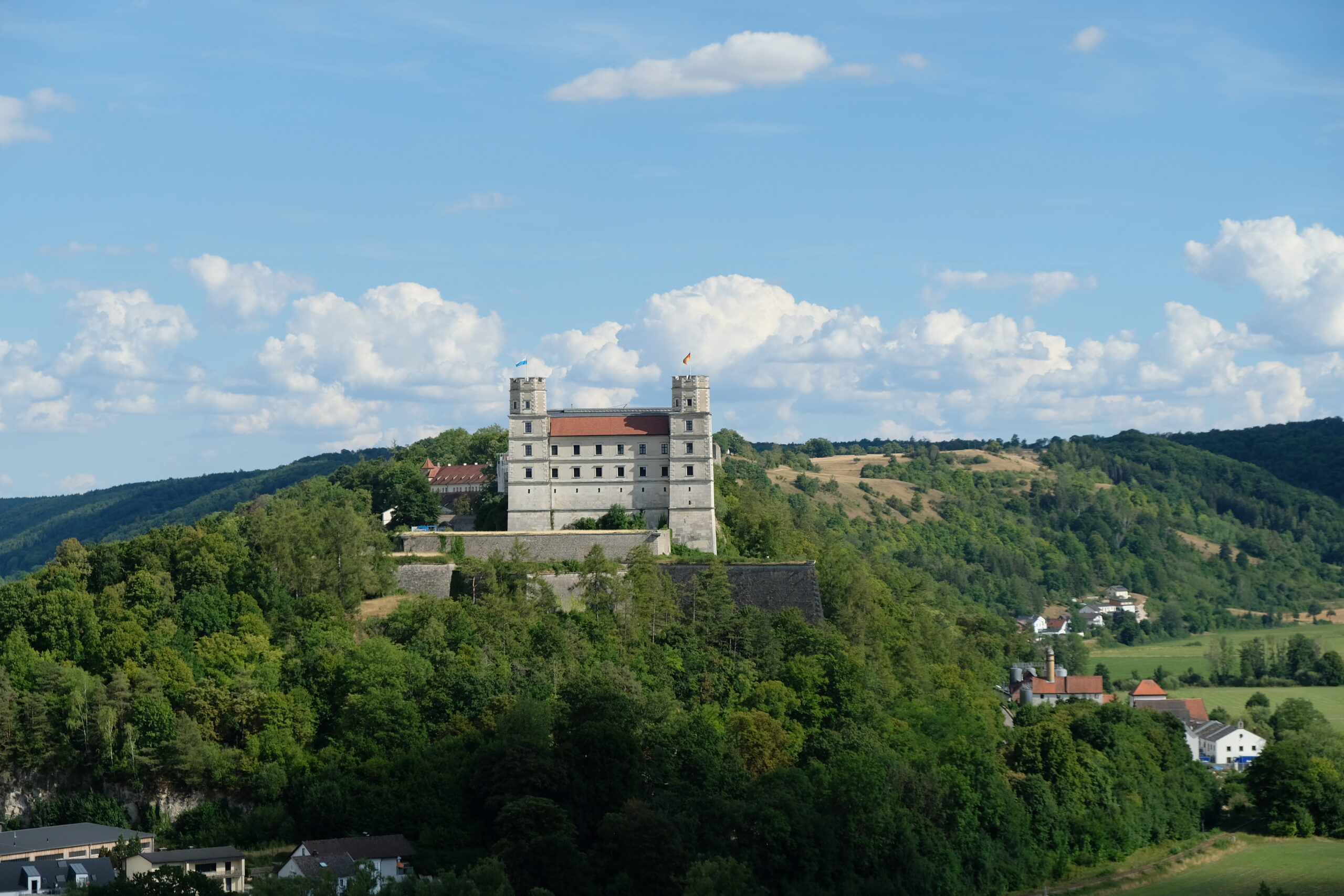
Despite the dramatic landscape the Althmühl river flows very tranquil through the valley. Cycling along the silently flowing river was a complete delight. I had, however, to leave this peaceful river valley. In the little place of Wasserzell I left the Altmühl and pushed my bike up an insanely steep, but luckily short hill. After a few kilometres I came to the little village where my old friend from university lived and where he was tilling the land of his ancestors. Here I stayed and went with him into the forest to see the damage caused by climate change and the increased populations of the spruce bark beetle (Ips typographus). I had been shocked by the damages all over Germany caused by this pest. The bark beetle likes hot temperatures and the hotter it gets the more generations per year can be produced. The effect is that climate change causes more and more bark beetle generations to complete their development and consequently Germany’s spruce forests are dying.
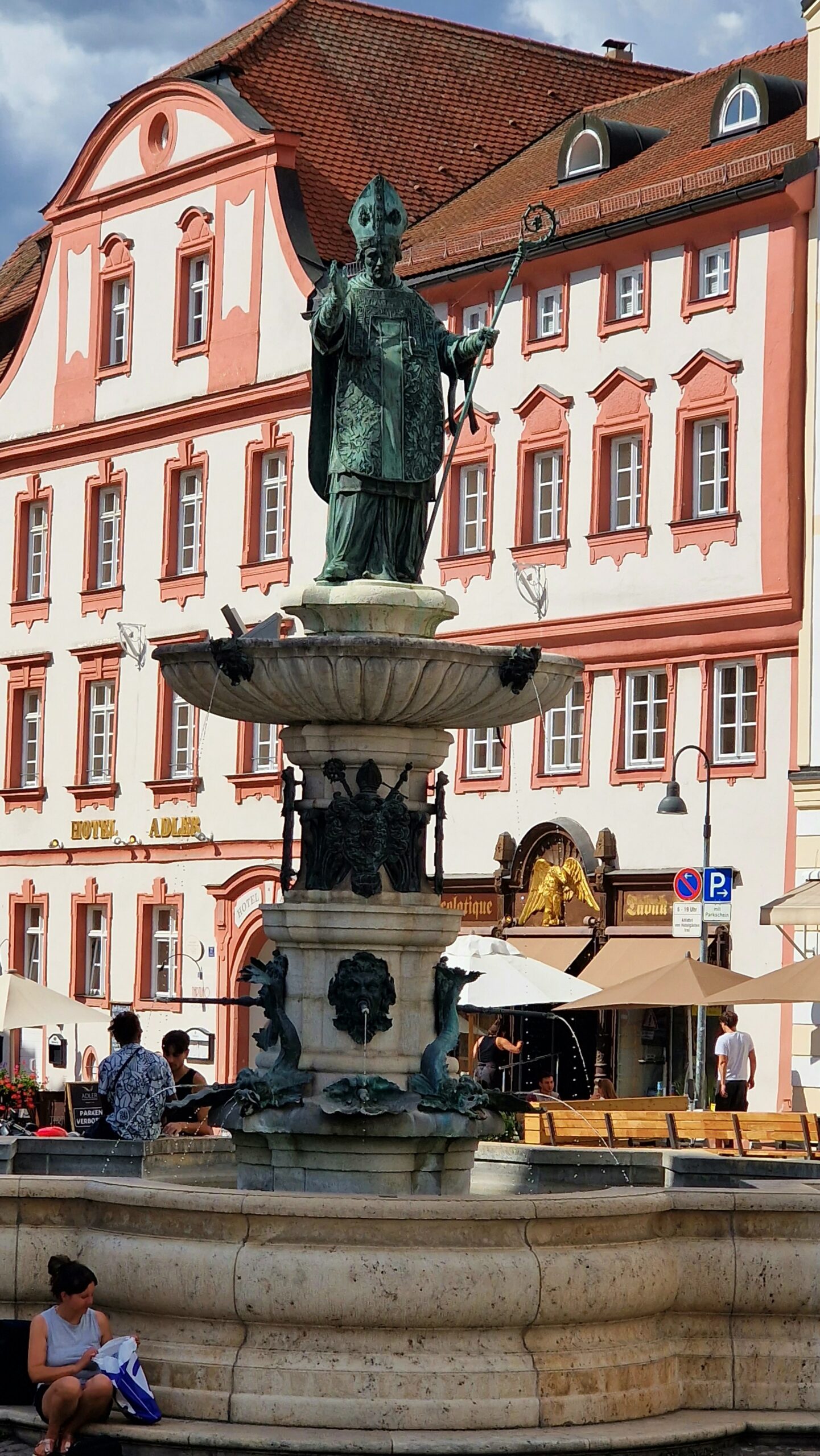
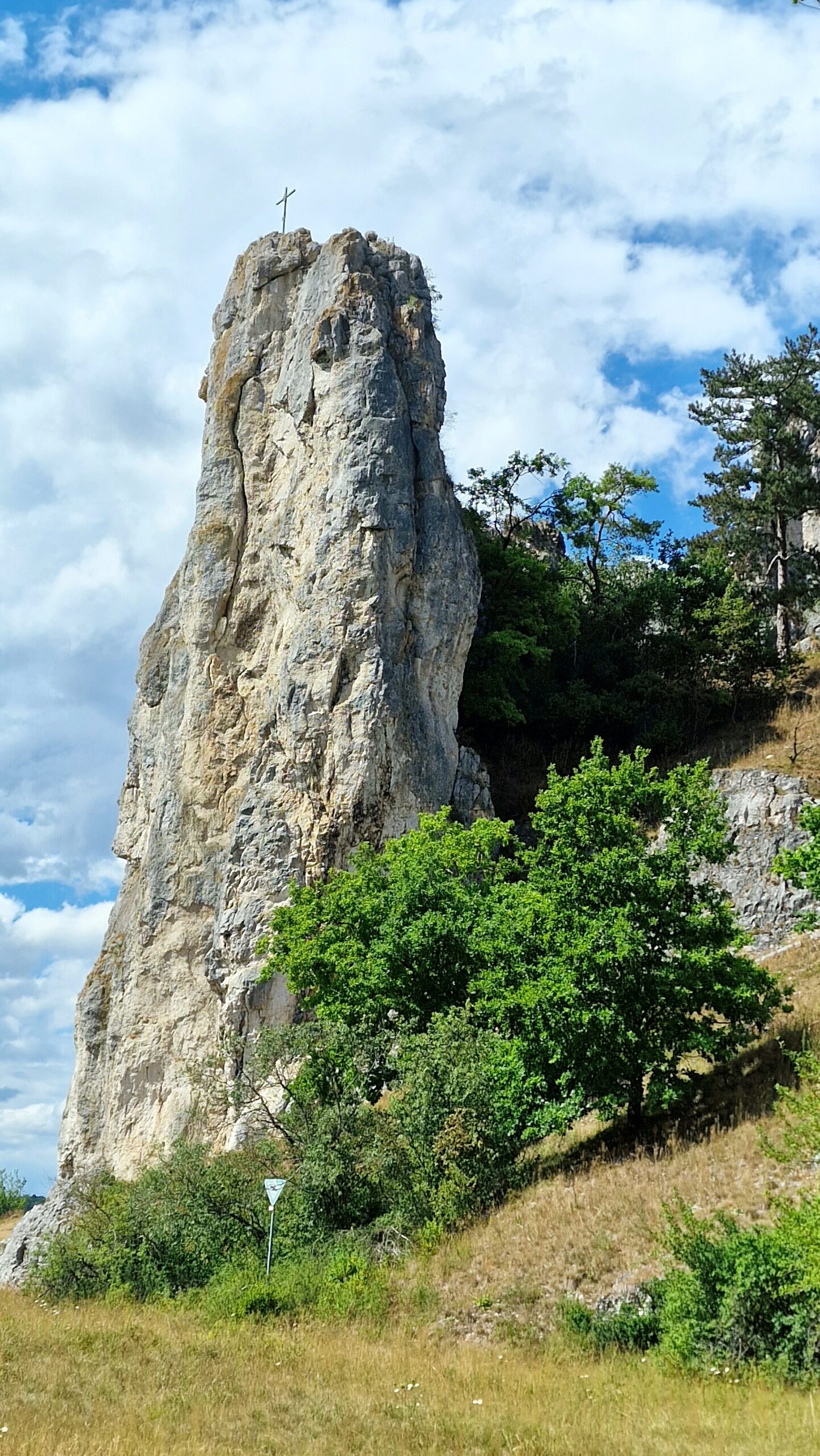
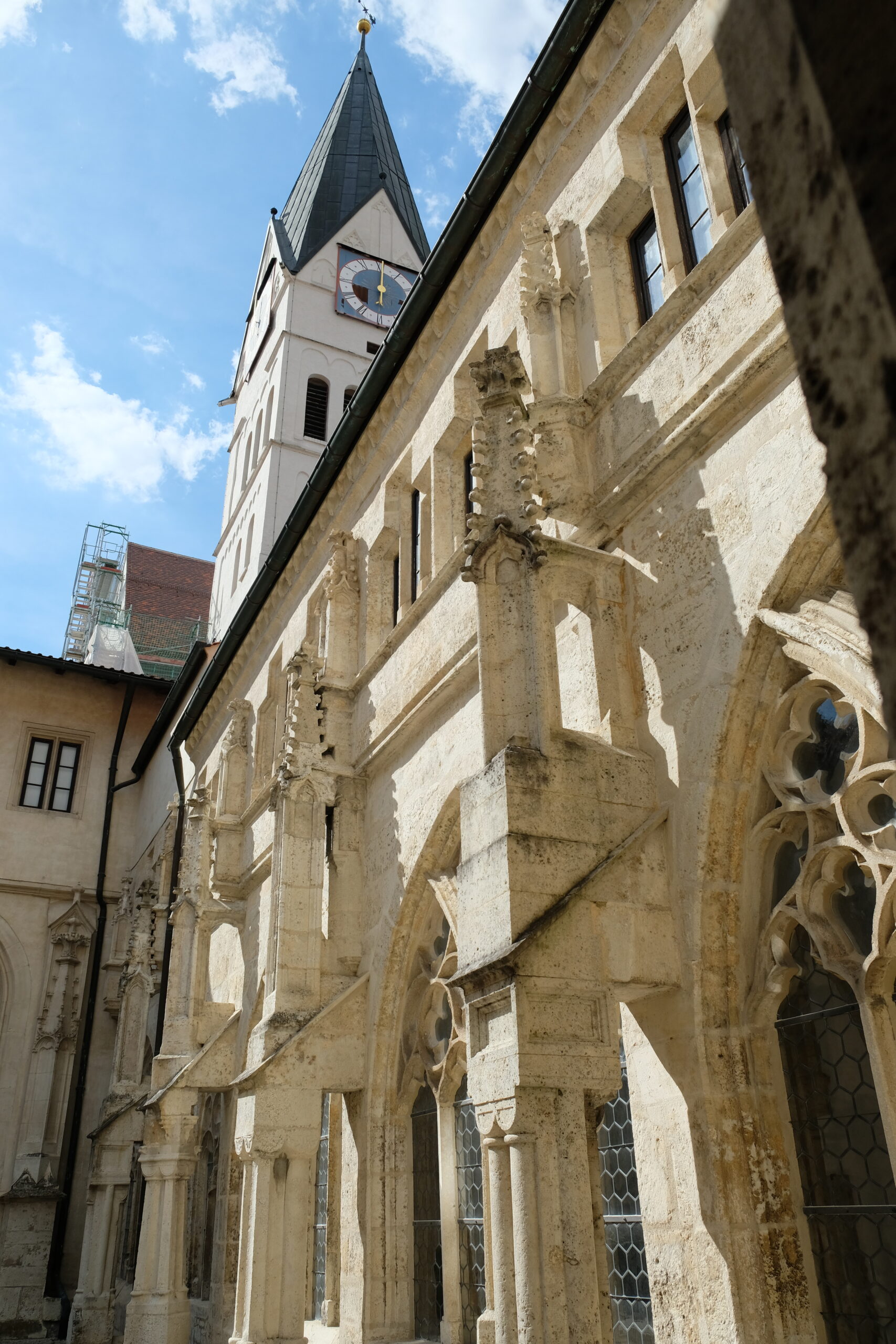
Visiting the town of Eichstätt provided another opportunity to see one of the finest old town centres of southern Germany. Eichstätt has a very pretty baroque old city which is very much dominated by the catholic University, the seminary and churches in the city. In fact, it is probably one of the most important catholic places in southern Germany, since Willibald von Eichstätt had taken this place as his residence. Willibald, a possible nephew of the main missionary of the Germans, Bonifacius, was an Anglo-Saxon missionary in the 800 century and he founded monasteries and the diocese of Eichstätt. Such success can’t be overlooked by the hierarchy, of course, and consequently he was canonized in the tenth century by the church. Today all Eichstätt is dominated by Willibald with his name being spread all over the city. The most dominating being the palace fortress “Willibaldsburg” which overlooks the entire town of Eichstätt and is an impressive building on the top of a hill above the town. Although build for military reasons it serves today as the location of one of the most beautifully located natural history museums of the world. Visiting this place, I could have stayed an entire day and studied the geology of the region and its amazing fossils. I had to leave of course, because the road wanted to have me back.
